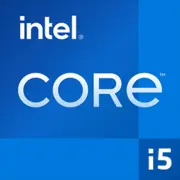Intel Core i5-3340

Intel Core i5-3340: Review of an Outdated but Durable Processor for Budget Tasks (April 2025)
Introduction: Who Needs the "Dinosaur" Ivy Bridge in 2025?
Despite its respectable age (released in 2013), the Intel Core i5-3340 continues to find applications in niche scenarios. This processor is a typical representative of the era when DDR3 was the standard, and multicore technology was just gaining traction. In 2025, it should be considered only for ultra-budget builds, upgrading old PCs, or specific tasks like a media center. Let's see if it stands a chance in the age of DDR5 and 5 nm process technologies.
1. Key Specifications: Architecture and Performance
Ivy Bridge Architecture (22 nm)
The processor is based on the Ivy Bridge microarchitecture—a successor to Sandy Bridge. Key improvements include:
- Reduced power consumption due to the transition to a 22 nm process.
- Support for PCIe 3.0 (up to 16 lanes), still relevant in 2025 for basic graphics cards.
- Integrated Intel HD Graphics 2500—weak for gaming but capable of handling 1080p video.
Performance in Numbers
- 4 cores / 4 threads (no Hyper-Threading).
- Base frequency of 3.0 GHz, turbo mode up to 3.3 GHz.
- Geekbench 6: 1168 (Single-Core), 3512 (Multi-Core).
For comparison: the modern budget Core i3-13100 (2023) scores around ~2400/8800—2-2.5 times better.
Key Features
- Quick Sync Video technology—hardware video encoding/decoding. Useful for streaming.
- Virtualization support (VT-x)—relevant for testing labs.
2. Compatible Motherboards: A Quest for Rarities
LGA 1155 Socket
The processor requires motherboards with the LGA 1155 socket. Suitable chipsets include:
- H77/Z77/B75—optimal for overclocking (Z77) or basic tasks (H77).
- Q77—enterprise solutions with vPro support.
Choosing Features in 2025
- New boards are no longer produced—look for used options on eBay or local flea markets. Average price: $30-60.
- Risks: swollen capacitors, limited warranties. For example, an ASUS P8H77-M PRO motherboard from 2012 may require a CMOS battery replacement.
- Tip: check for UEFI BIOS support—this will simplify the installation of modern operating systems.
3. Supported Memory: DDR3 and Its Limitations
Memory Types
- DDR3-1333/1600 MHz—maximum theoretical volume of 32 GB, but most boards support 16-24 GB in practice.
- No support for DDR4/DDR5—a significant downside in 2025, where DDR5 has become the standard.
Recommendations
- Use dual-channel mode (2x8 GB DDR3-1600) to maximize performance.
- Avoid cheap modules without heatsinks—older boards are sensitive to memory quality.
4. Power Supply: Minimum Energy, Maximum Reliability
Power Calculation
- CPU TDP: 77W.
- Recommended PSU: 400-500W (considering the graphics card). Examples:
- Without discrete graphics: 300W (e.g., Be Quiet! SFX Power 3 300W, $45).
- With a GPU like NVIDIA GTX 1650: 450W (Corsair CX450, $55).
Tips
- Choose a PSU with an 80+ Bronze certification or higher—stability is more important than savings.
- Avoid noname brands—a risk for older components.
5. Pros and Cons: Why It's a Double-Edged Sword in 2025
Pros
- Low cost: a used processor can be bought for $15-25.
- Sufficient performance for basic tasks: office work, browsing, 1080p video.
- Energy efficiency by 2013 standards.
Cons
- Outdated architecture: lags behind even budget Intel Alder Lake processors.
- No support for modern standards: USB 3.1, NVMe (only through adapters), DDR4.
- Limited upgrade potential: the maximum CPU for LGA 1155 is the Core i7-3770K.
6. Use Cases: Where i5-3340 Can Still Shine
Office and Education
- Document work, Zoom conferences, light Photoshop.
- Example: a build with i5-3340 + 16 GB DDR3 + 256 GB SSD—budget around $100 (used components).
Media Center
- Playback of 4K video via hardware decoding (codec verification required).
- Tip: add NVIDIA Shield TV for streaming.
Light Gaming
- Games from before 2015: CS:GO, Dota 2, Skyrim (on low settings, 720p).
- Example: pairing with a GTX 750 Ti can achieve 40-60 FPS in Fortnite on low settings.
7. Comparison with Competitors: The Battle of the Oldies
AMD FX-8350 (Piledriver, 2012)
- Pros: 8 cores, better in multithreaded tasks.
- Cons: TDP of 125W, weak single-core performance.
- Conclusion: i5-3340 more energy-efficient; FX-8350 better for rendering.
Intel Core i5-6500 (Skylake, 2015)
- Pros: support for DDR4, 20-30% higher performance.
- Cons: costs more ($40-50 used).
8. Practical Assembly Tips
HDDs vs. SSDs
- Definitely install an SSD (e.g., Kingston A400 240 GB, $25)—it will revitalize the system.
Cooling
- Stock cooler is sufficient, but replace thermal paste (Arctic MX-4, $5).
Operating System
- Windows 10/11: possible driver issues. Better to choose Linux (Ubuntu/Linux Mint).
9. Final Conclusion: Who Is i5-3340 Suitable for in 2025?
This processor is a choice for:
1. Enthusiasts building PCs from used components for $100-150.
2. Owners of old systems where upgrades are limited to the LGA 1155 socket.
3. People with minimal requirements: office work, browsing, media playback.
Alternative: for $200-250, you can build a system based on Ryzen 5 5500 (AM4, 6 cores, DDR4) that will be 3-4 times faster. But if the budget is strictly limited—the i5-3340 can still serve well.
Conclusion: The Intel Core i5-3340 in 2025 is a "workhorse" for very specific tasks. Its time has passed, but in the hands of a skilled user, it can still impress with its longevity. The main thing is not to expect miracles in modern gaming or 4K editing.
Basic
CPU Specifications
Memory Specifications
GPU Specifications
Miscellaneous
Benchmarks
Compared to Other CPU
Share in social media
Or Link To Us
<a href="https://cputronic.com/cpu/intel-core-i5-3340" target="_blank">Intel Core i5-3340</a>